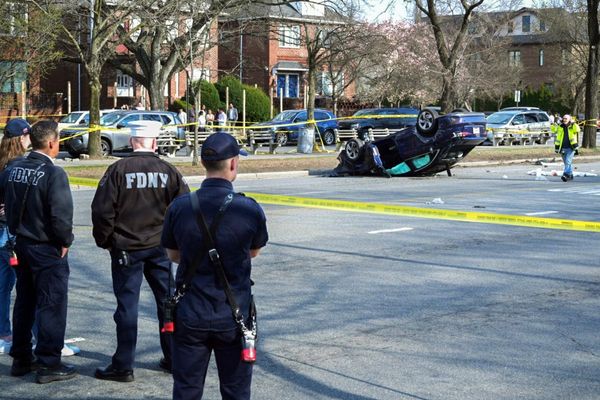
For young adults, university is a period of firsts: their first time living away from home, having to budget their money and going to pubs and nightclubs. For many, it will also be the first time they will try drugs, and as our new report shows, be exploited by county lines drug dealers.
County lines is a model of drugs distribution that involves transporting and trading illicit drugs from one part of the country to another, and selling them via dedicated phone lines. It is a form of exploitation often associated with children and vulnerable adults, but anyone can be targeted.
We have investigated the prevalence of county lines drug dealing targeting university students, who are known to have increased exposure to drugs, but are often overlooked in discussions about organised crime and county lines.
In March 2022, we sent freedom of information requests to 127 UK universities enquiring about county lines and drug incidents involving their students. From the 113 responses we received, we learned that since the academic year of 2016-17 there have been approximately 14,000 drug-related incidents on university campuses and in student accommodation. Of these, approximately 300 specifically related to drugs distribution.
Students may be exploited to transport drugs (for which travelling to and from university provides an ideal cover story). They may also have their student accommodation “cuckooed”, used as a base to store and sell drugs.
Fifty universities did not hold any data relating to county lines, and 44 said they had no recorded cases. However, data from seven universities revealed that since 2017, there have been as many as 109 university students involved in county lines, as either a victim or perpetrator, at those institutions alone.
We also conducted a student survey of 140 students. The responses, combined with the data (or lack thereof) from universities, suggest that the prevalence of county lines exploitation on campuses may be much higher than universities are aware of.
Up to a third of students reported witnessing common signs of county lines among their fellow students, such as sudden unexplained increases in money (27%) and luxury goods (24%), owning multiple “burner” phones (29%), being scared of particular people (22%) and having unexplained injuries (25%).
They also observed non-students frequently visiting student accommodation at unsociable hours (34%) or unofficially moving into student accommodation (22%). Around one in ten respondents said they witnessed other students carrying weapons or keeping them in their homes.
Why students are a target
There are a number of reasons why county lines perpetrators would want to target students. For a start, there is a huge drug market in the student population.
A 2018 report by the drug law charity Release and the National Union of Students found that 56% of university students have taken drugs. It makes sense that county lines groups would want to capitalise on this market.
In previous years, posts on social media have sparked fears about dealers advertising to students during freshers week by handing out business cards and samples of their drugs.
Students can also be targeted online. Our survey found that 60% of students had seen drugs advertised on Snapchat, with others saying they had seen this on Instagram (35%) or other social media (38%).
Students also reported that they had seen non-students joining and posting in group chats specifically for students. Although this may be for a number of motives, county lines perpetrators are known to target and infiltrate group chats in areas where they want to begin trading.
Research suggests that the student drug market is a hybrid of purchasing from traditional dealers and the social supply of sharing drugs among friends. Students are not just potential consumers, but also potential suppliers. Over 40% of respondents to our survey said that they had witnessed students selling drugs to their peers.

Our survey found that three in ten students had been approached to purchase drugs from students or non-students, and one in ten had been approached to sell drugs by students or non-students. However, students were more likely to be offered drugs for free by other students (53%) than non-students (32%).
While the social sharing of drugs is not uncommon, providing drugs for free can also be part of the exploitation process, with victims later being told that they must repay these costs. Additionally, some victims of exploitation may be coerced to recruit and exploit their peers.
All of this shows why students also make valuable targets for organised crime groups, because they can easily access and blend in with other students to sell drugs.
Protecting students
County lines groups can be quick to adapt to policing responses. As children are increasingly recognised as victims, students may be the next best demographic to target.
Read more: How gangs are exploiting children to do their dirty work
University students may be at increased risk of county lines exploitation by mere exposure to drugs and dealers, regardless of whether or not they use drugs themselves. This risk may be increased by vulnerabilities such as financial worries and poor mental health.
University students are adults, and do not have the same laws to protect them that children have. In UK law, the transition from childhood to adulthood is abrupt, occurring the day a young person turns 18 years old. However, the developmental transition from childhood to adulthood does not happen overnight.
Recognising the risks of drug use and supply is one of the first steps to protecting students. As students head to university, many for the first time, they should be aware of how they could become a target for exploitation via county lines.
For more information on county lines, and what to do you if you are concerned, visit Crimestoppers.
Beth Hall received funding from The Centre for Criminal Justice Research & Partnerships at the University of Central Lancashire.
Roxanne Khan received funding from The Centre for Criminal Justice Research & Partnerships at the University of Central Lancashire.
This article was originally published on The Conversation. Read the original article.







